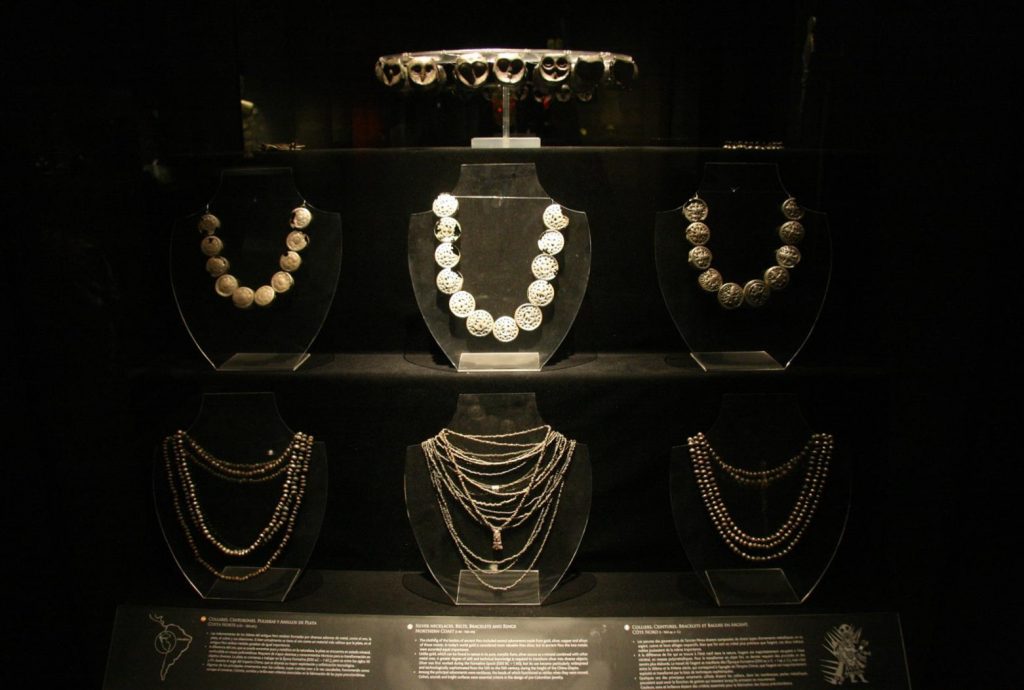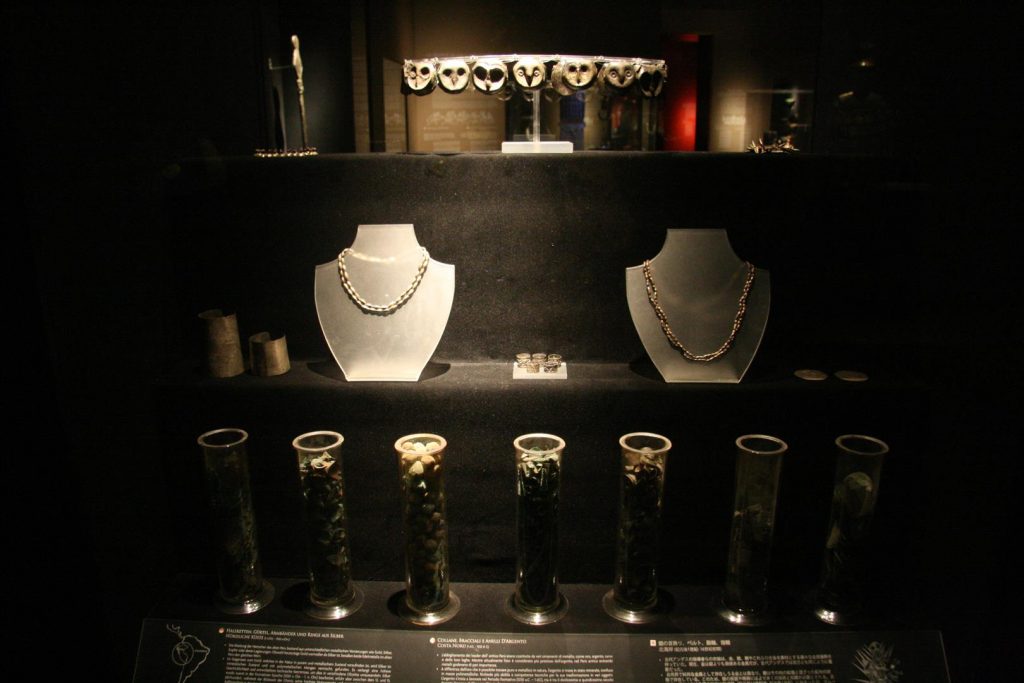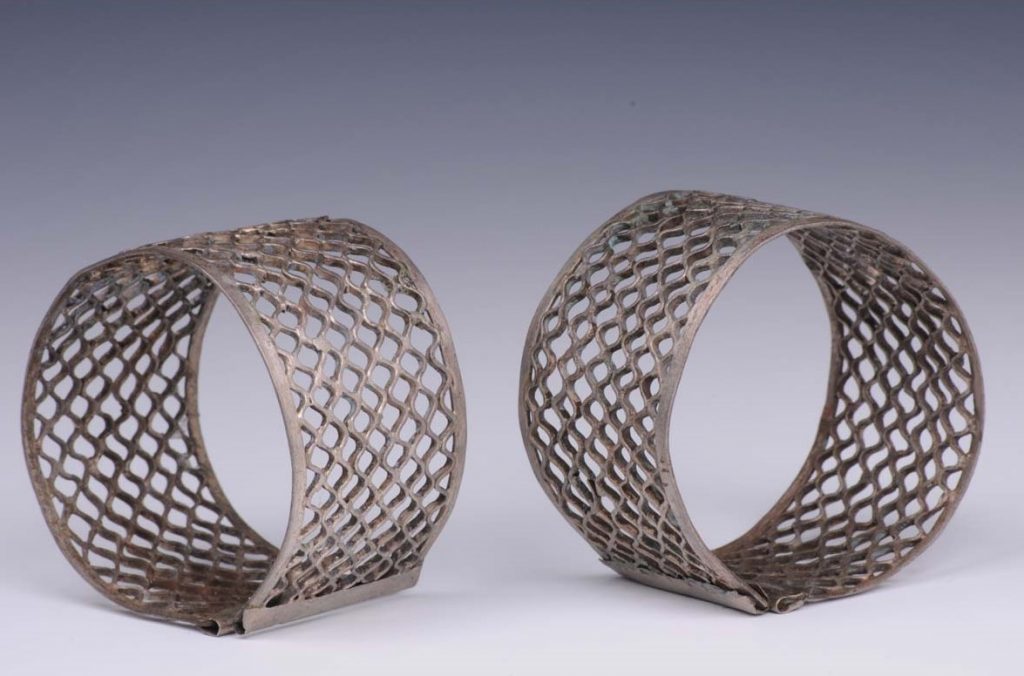Silver Necklaces, Belts, Bracelets and Rings
Room 11, Vitrine 132
Metal
Peruvian Northern Coast
1 AD – 1532 AD
ML100441, ML100446-ML100454, ML100657-ML100660, ML100813, ML100815, ML100927, ML100928, ML101196.
The clothing of the leaders of ancient Peru included several adornments made from gold, silver, copper and alloys of those metals. In today’s world gold is considered more valuable than silver, but in ancient Peru the two metals were accorded equal importance.
Unlike gold, which can be found in nature in its pure, metallic form, silver occurs as a mineral combined with other metal ores. A greater degree of skill and technical knowledge is required to transform silver into diverse objects. Silver was first worked during the Formative Epoch (1250 BC – 1 AD), but its use became particularly widespread and technologically sophisticated from the 12th to the 15th century, during the height of the Chimú Empire.
Among the principal adornments were necklaces, the beads of which functioned as rattles when they were moved. Colors, sounds and bright surfaces were essential criteria in the design of pre-Columbian jewelry.


